How Long Amaryllis Flowers Last On The Plant & When Cut
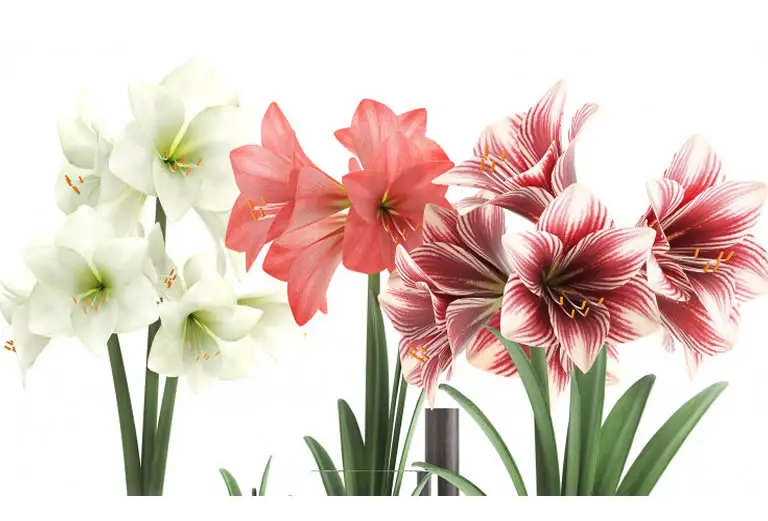
With amaryllis being a perennial that only naturally blooms once per year, many plant owners want to know if it is worth growing them. If the flowers don’t last long enough to really appreciate them is it worth having amaryllis?
This is a great question that I am often asked and so in this article I will cover the topic of amaryllis blooms so you know how long they last on the plant, how long cut flowers last in a vase and how you can make both last longer?
Table of Contents
- How Long You Can Expect Your Amaryllis Blooms To Last
How Long You Can Expect Your Amaryllis Blooms To Last
As amaryllis only bloom once per year you will no doubt want to know how long the blooms last.
On average, amaryllis blooms will last 6 weeks.
However, with the correct care and attention amaryllis blooms can last up to 8 weeks.
If the plant is left totally unattended or is not kept in the optimal conditions the blooms will only last about 4 weeks.
Amaryllis plants produce beautiful colorful blooms that come in many different varieties.
Amaryllis thus gives you the opportunity to add a splash of different colors to any indoor or outdoor space.
Are you sure you are growing amaryllis?
As I outlined in a previous article most amaryllis plants and bulbs sold in the USA (and also most that are sold in the UK) are not actually amaryllis.
There are 1,600 different varieties of the plant genus Amaryllidaceae many of which are marketed and sold as amaryllis.
From a technical point of view there are only 2 species of amaryllis, Amaryllis belladonna and Amaryllis paradisicola.
It is much more likely you are actually growing the genus Hippeastrum as it is often sold as amaryllis.
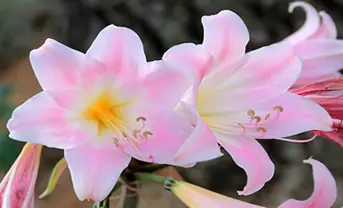
To be honest, from an aesthetic and care viewpoint, there isn’t much difference in the plants and so referring to Hippeastrum as amaryllis has become commonplace even among seasoned, experienced gardeners.
Luckily, all species in the Amaryllidaceae family require the same care and follow similar growth stages so you don’t need to worry about the exact species of amaryllis you have in order to know how long blooms last or what you can do to make them last longer.
The following advice applies to all varieties of amaryllis regardless of whether they are amaryllis proper or a different species of Amaryllidaceae.
So, for the remainder of this article (I actually do it in all my amaryllis articles) I will refer to all Amaryllidaceae simply as amaryllis.
How long you can expect amaryllis flowers to last on the plant
As I have already outlined, amaryllis flowers will last between 4 – 8 weeks when they are left uncut and remain on the plant.
The most common lifespan for amaryllis flowers is 6 weeks.
Having said that, the better you look after the plant, and ensure its environment is optimal for long-lasting blooms, the longer you will see healthy flowers on the stems.
How to make amaryllis flowers last longer
There are several things you can do to make sure your amaryllis blooms last as long as possible.
If you follow the advice below you should be able to encourage your amaryllis blooms to stick around for up to 8 weeks.
Below are the steps you should take to ensure your amaryllis blooms last as long as possible:
- Ensure you are using the correct soil.
- For plants that have not been repotted for 6 months or more use slow release liquid fertilizer.
- Water the plant regularly.
- Ensure the plant has sufficient sunlight but not too much strong direct sunlight.
- Regulate the climate to ensure the plant is in an environment with temperatures around 70°F.
I will quickly cover each of the steps I mentioned above to give you a better understanding of the needs of your amaryllis plant during its blooming stage.
If you follow these simple steps you will find that your amaryllis flowers last much longer than usual. With careful attention to detail you can have amaryllis blooms that last up to 8 weeks.
On a related note: I described in a previous article, here, how you can stagnate the planting of several different varieties of amaryllis to control the bloom-time of each plant.
By taking advantage of both the 8 week growth stage and common 6 week bloom stage of this plant, you can control when each plant blooms to have a constant amaryllis bloom in your home.
If you also increase the length of each bloom then you can have many different colored amaryllis growing in your home continually throughout the year.
Use the correct soil for longer lasting flowers
To ensure long lasting blooms you should first make sure that you are using the correct type of soil, which in the case of amaryllis is potting mix.
Amaryllis is a typical tropical, and subtropical, succulent that requires warmth and plenty of light.
But, unlike many other succulents, such as haworthia for example, amaryllis does not like to grow in a typical succulent soil mixture.
This plant requires a nutrient-rich soil in order to thrive – the type you would usually use for non-tropical plants and evergreens or for encouraging seedlings and cuttings to grow.
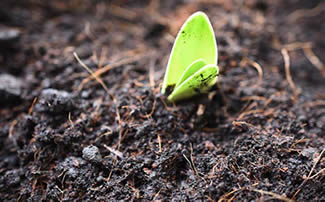
I have found that that this Miracle-Gro potting mix has exactly the right mix of nutrients for amaryllis and makes an excellent soil for growing it.
It is especially good for indoor potted amaryllis.
If the plant has been recently planted, or has been reported within the last 6 months, then this soil is all that you need for growing a healthy plant with healthy, vibrant and lush leaves.
However, once the plant enters the blooming stage you will want to add some fertilizer.
I actually recommend repotting your amaryllis at least once per year, though it is much more preferable to repot it twice per year, at 6 month intervals.
For soil that is 6 months or older use fertilizer
With amaryllis that has been sitting in the same soil for 6 months or longer you will need to add fertilizer during the growth stage as well as the blooming stage of the plant.
Amaryllis are feeders and love nutrient-rich soil, hence why I use a rich potting mix, but being feeders they can deplete nutrients fairly quickly.
I use a slow release liquid feed, any of these 10-10-10 fertilizers will work well, so I have no need to constantly attend the plant.
Adding the recommended amount of feed (dependent on the brand you are using) every 2 weeks during the plant’s growth stage is enough to ensure the plant has all the nutrients it needs to thrive.
Once my amaryllis begins to bloom I will fertilize it more regularly adding feed every 10 days until blooming is complete.
Be careful not to continue feeding the plant once it has finished blooming! This is important.
When the flowers have opened fully do not fertilize the plant.
Amaryllis bulbs require 2 – 3 months dormancy after blooming has finished in order to rest and gather much-needed resources for the next growth cycle.
This means that after full bloom, which can last from 4 – 8 weeks, your amaryllis bulb will want to rest and become dormant.
If you add fertilize after blooming has finished you run the risk of forcing your amaryllis to skip its dormancy stage and enter a new growth stage.
This is not only bad for the plant overall but it will prevent it from blooming in its next cycle.
I find that it is better to be safe than sorry and so stop feeding the plant as soon as all the buds are fully open and the plant is flowering.
If you have followed my advice and stuck to the feed routine then the soil will contain more than enough nutrients to produce the long-lasting blooms the plant is capable of giving you.
By not adding any more fertilizer to the soil you will avoid the possibility of preventing dormancy and all the problems that this entails.
Water amaryllis regularly during the growth stage for longer bloom time
Although many succulents can go a long without water, your amaryllis requires regular watering.
This is especially the case with houseplants that have much more limited resources and soil than an outdoor garden-planted amaryllis.
Amaryllis should be kept in moist soil that is not allowed to completely dry-out.
However, the soil should never be drenched and should certainly never be waterlogged.
As a general rule-of-thumb you should allow the top layer of amaryllis soil to dry down to a depth of a few centimeters.
I use the finger-test method for determining the moistness of a plant’s soil.
When the top layer of my potted amaryllis dries I push my index finger into the soil to the point where the soil meets the first bend in my finger.
When I remove my finger there should be some dirt residue present. If my finger is completely dry then the plant needs watered.
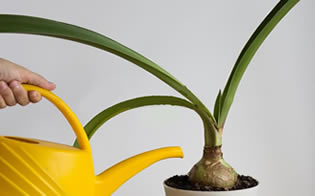
When watering is required add just enough water to ensure the top layer of the soil is wet, but not drenched.
Re-water once this top layer has dried out again.
You will quickly become accustomed to when your personal amaryllis needs water after just a few times performing the finger-test.
Read our ultimate guide to watering amaryllis here.
Get the lighting right and see longer blooms
Amaryllis is a plant that loves plenty of light but, but unlike desert succulents amaryllis do not like to sit in direct sunlight for long periods.
In fact, amaryllis can be grown very successfully in shaded areas and will easily thrive in partial shade.
If you give amaryllis too much direct sunlight it can cause problems with the leaves, with leaf burn being the most common issue (see this article).
Healthy lush green upright leaves are a sign of a healthy amaryllis plant. However, some issues can cause your plant to produce healthy leaves but no blooms.
If you have been experiencing this problem then you should read the article Amaryllis Leaves. The Ultimate Guide.
It is actually not a bad idea to read that article anyway to avoid any future blooming problems with your plant.
Regulate the temperature for better & longer blooms
Amaryllis proper, are tropical plants. Many of the Amaryllidaceae species sold as amaryllis are subtropical plants. Both types therefore need warmth to survive.
Freezing temperatures will kill amaryllis and this is why it can only be kept outdoors all year round in USDA climate zones 9 through 11.
Although it is sometimes grown outdoors in USDA climate zone 8, an amaryllis in this climate zone will require careful winter protection, (see this), to protect it from winter and early spring frost.
Of course this does not mean that you cannot take your potted amaryllis outside in the warmer summer months. You most certainly can.
You just have to be careful that the temperatures in your region are adequate and comfortable for your plant, especially at night.
To understand the requirements of outdoor garden amaryllis, whether you plan to plant it directly in the yard or move potted amaryllis outdoors, read my Ultimate Guide to Using Amaryllis Outside.
Both amaryllis indoor houseplants and outdoor yard plants require specific warm temperatures to ensure healthy, vibrant, colorful and long-lasting blooms.
Amaryllis will keep its bloom longest in a 70°F environment.
Though you can keep your plant in temperatures up to around 90°F and still see blooms they will not last as long.
You should not let the temperature fall below 60°F, or an amaryllis plant will likely not bloom at all.
If you can maintain a constant 68° – 70°F temperature once the plant has bloomed your amaryllis flowers should last 6 – 8 weeks easily (with all the other steps being observed also).
How long do amaryllis flowers last when cut?
Amaryllis flowers left on the plant and those that you cut and put in a vase will have different life spans.
Amaryllis flowers left uncut and still on the plant will last 4 – 8 weeks with the most common time being 6 weeks.
Cut amaryllis flowers left in just water or a vase will only last a few days. Cut amaryllis flowers given proper nutrients will last up to 2 weeks.
Obviously a flower that is left uncut and remains on its parent plant will still be receiving all the nutrients from the soil, whereas a cut flower is no longer receiving any nutrients.
However, contrary to common belief the flower is not dead when it has been cut and removed from its parent plant.
A cut amaryllis flower can still receive nutrients and thus continue to live for some time after it has been removed from the plant.
How long you can expect cut amaryllis flowers to last in a vase
If amaryllis flowers are left in just water they won’t last long. You can expect them to start to discolor and lose petals in just a few days.
But, if you ensure the flowers still have access to adequate nutrients then you can sustain their life for a much longer period and expect them to last weeks instead of days.
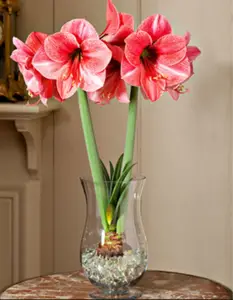
As I mentioned above, although most people think a flower is dead the moment it is cut or plucked from its parent plant, the cells in the flower are still alive.
By ensuring the cells inside a cut amaryllis flower continue to receive nourishment you can keep the flower alive, colorful and perky for up to 2 weeks.
How to make amaryllis flowers last longer once cut
To ensure amaryllis flowers that remain on the plant last as long as they possibly can you should read the advice given earlier in this article where I outlined how to make amaryllis blooms last longer.
For the remainder of this article the advice I give is for cut amaryllis flowers that you have removed from the pant.
How to make cut amaryllis flowers last longer in a vase
To make cut amaryllis flowers last longer you need to ensure they continue receiving nutrients.
First, make sure you cut the flower fairly low down on the stem, about 1 inch above the bulb, so that you have a long stem and flower.
This long stem length will come in handy later for helping to lengthen the the flower’s life.
Use a well cleaned vase and add water to it.
Generally speaking, tap water is fine to use for flowers in a vase unless you live in a soft water area. Soft water is high in sodium and sodium is bad for flowers.
Distilled, or regular bottled, water is good to use if you are concerned about the sodium count of your tap water though you can look up hard and soft water states here.
To your vase water add some floral food, ensuring you follow the manufacturer’s guidelines on dilution rates. Adding too much or too little food will shorten the length of time you can keep the flower alive.
I have found that this flower food from Chrysal, which comes in handy separate packets, works great for cut amaryllis vase flowers (in fact its great for most flowers) and really does help to lengthen their life.
One packet works well with a standard size flower vase and will supply amaryllis flowers will all the nutrients they need to main cellular integrity.
Although I’ve got to the stage where I know exactly how much feed to use in most situations I think the convenience of single packets, that contain exactly the correct quantity of feed, removes the risk of getting mix quantities wrong.
At a pinch, when flora food isn’t available, you can use a home-made mixture to help maintain the life of cut amaryllis flowers.
Add 1 tablespoon of epsom salts with 1 tablespoon of baking soda and 1 teaspoon of ammonia and mix them with a gallon of lukewarm water.
This home remedy will work if you have nothing else at hand but a good quality floral food will give you at least 40% longer flower life.
Don’t rest on your laurels.
Although you can leave the flowers in this water for a week I have found that changing the water, and floral food mixture, twice weekly gives amaryllis flowers the best chance for surviving longer.
When it’s time to change the water be sure to give the vase a quick wipe clean or even wash it if there are signs of bacteria.
Also gently wipe the stems of your amaryllis flowers with a damp soft cloth to also remove any unseen bacteria.
You will find that before long the end of the amaryllis stem, where you made the initial cut, will begin to curl or even split.
This can restrict the amount of nutrients getting to the flower so cutting this split, or curled, end off the stem will allow the proper flow of nutrients and increase the life of the flower.
How many years will an amaryllis bulb continue to bloom?
Both indoor potted amaryllis and outdoor potted or yard planted amaryllis can live a long time when they are cared for properly.
But how long will an amaryllis bulb continue to bloom?
A mature amaryllis bulb will bloom once per year for decades if the plant is properly cared for.
Amaryllis are perennials that will produce vibrant colorful blooms year on year as long as they are grown correctly.
They need the right soil, stored at the correct temperature with the correct lighting, given regular water, fertilized during the growth stage and allowed to rest during their dormancy stage.
Amaryllis are easy-care succulents that require very little attention to produce blooms for years.
It is not unusual to hear of an amaryllis plant that is at least 30+ years old. I have even heard of amaryllis garden plants in the US, which are still producing blooms each year, that date back to the 1950s.
Below is a quick guide to ensure your amaryllis bulb continues to bloom for many decades.
To ensure your amaryllis lives as long as possible and continues to bloom yearly you must do the following:
- Make sure the environment is optimal for the plant. This includes using proper soil, ensuring adequate nutrients are available and the correct temperature range is observed.
- Regular watering during the growth stage is essential.
- Fertilization and repotting amaryllis will give it the best chance for a long healthy life. Outdoor garden amaryllis should be fertilized every few weeks during the growth stage.
- Amaryllis require very specific lighting. Plenty of sunlight is needed but not too much direct sunlight. Amaryllis grown in partial shade will last a long time.
- An amaryllis bulb, absolutely must be allowed to rest. Forcing a bulb to skip dormancy or bloom more than once a year will shorten the life of the plant.
As a final word I would just like to say that if you look after your amaryllis it will produce beautiful colorful blooms, with flowers that last up to 8 weeks on the plant and up to 4 weeks in a vase, for many decades to come.
Thanks for reading! I'm Michael — houseplant fanatic and your Pinterest plant guide.
Follow me on Pinterest for fresh updates 🌿



